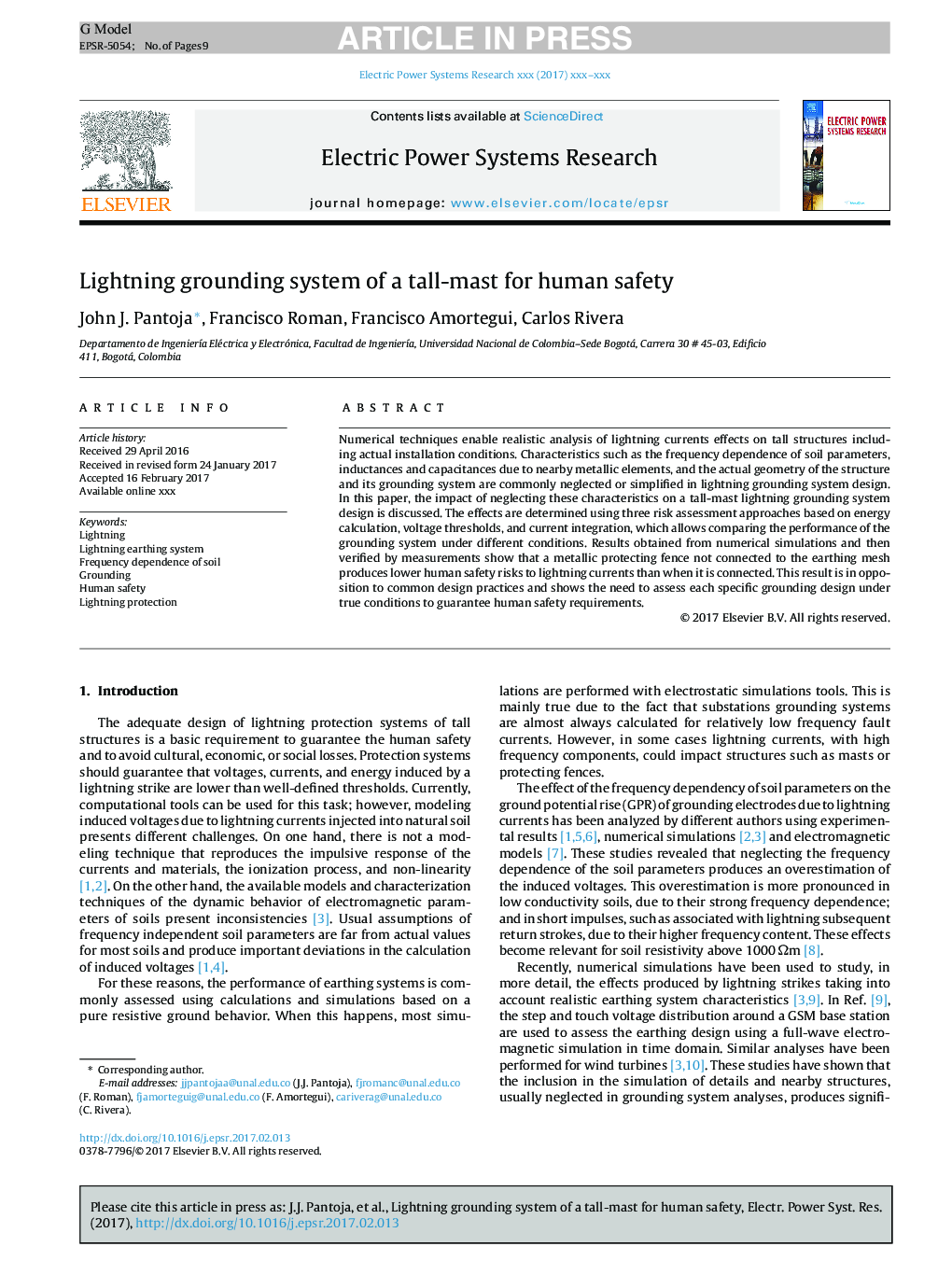| Article ID | Journal | Published Year | Pages | File Type |
|---|---|---|---|---|
| 5000987 | Electric Power Systems Research | 2017 | 9 Pages |
Abstract
Numerical techniques enable realistic analysis of lightning currents effects on tall structures including actual installation conditions. Characteristics such as the frequency dependence of soil parameters, inductances and capacitances due to nearby metallic elements, and the actual geometry of the structure and its grounding system are commonly neglected or simplified in lightning grounding system design. In this paper, the impact of neglecting these characteristics on a tall-mast lightning grounding system design is discussed. The effects are determined using three risk assessment approaches based on energy calculation, voltage thresholds, and current integration, which allows comparing the performance of the grounding system under different conditions. Results obtained from numerical simulations and then verified by measurements show that a metallic protecting fence not connected to the earthing mesh produces lower human safety risks to lightning currents than when it is connected. This result is in opposition to common design practices and shows the need to assess each specific grounding design under true conditions to guarantee human safety requirements.
Related Topics
Physical Sciences and Engineering
Energy
Energy Engineering and Power Technology
Authors
John J. Pantoja, Francisco Roman, Francisco Amortegui, Carlos Rivera,
